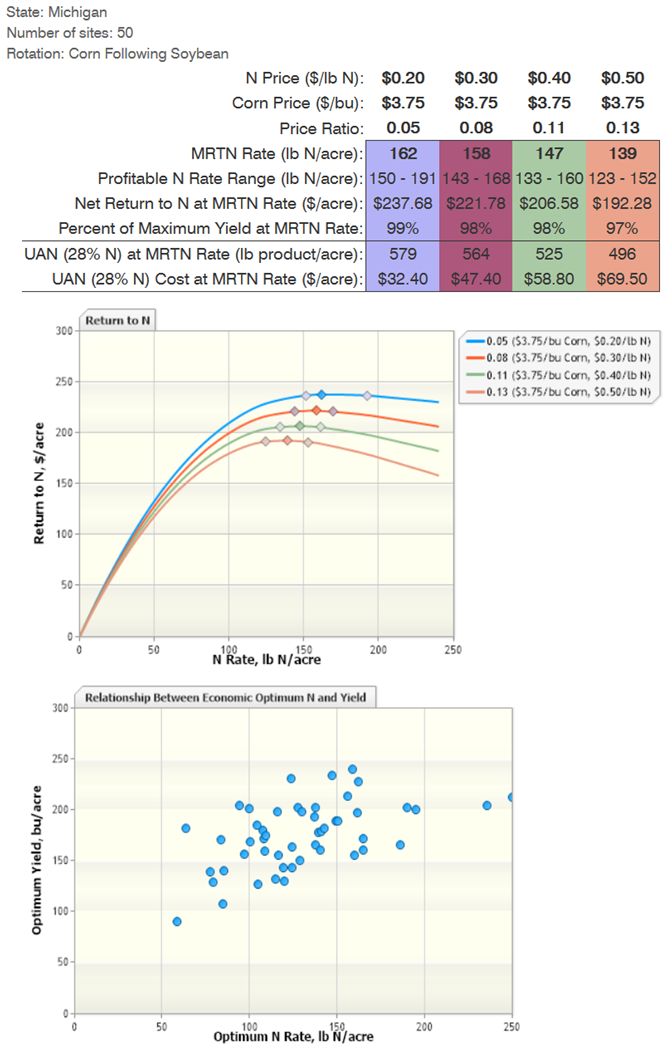Top production tips for irrigated corn production
Follow these tips for trimming corn production costs while keeping yield potential high.

With low corn prices and increasing costs for inputs, irrigated corn growers need to be looking at trimming costs while keeping yield potential high. The following are a few thoughts that hopefully can promote these goals.
Variety selection
The basic truth remains that there are substantial differences among hybrids, even those offered by the same company. Hybrids differ in their ability to perform in high population, high competition environments. Don’t overlook leaf disease ratings in irrigated corn. If you can find information on tar spot tolerance, that could be important this year. With hybrid turnover at such a fast pace, it takes work to keep up to date. Be a student of the game in hybrid selection.
Soil fertility
Starter nitrogen and phosphorus (2x2) is the most efficient way of maximizing nutrient uptake while applying a high enough rate to ensure nitrogen availability. Only add phosphorus if the soil test levels suggest it is needed, as excess does not improve yields but does quickly add costs. Check potassium on sand/loamy sand soils regularly, as it has potential to leach through the soil profile. Sulfur is likely to be needed on most of the irrigated sands in the region. Sulfur helps with nitrogen utilization as well as alleviating the yellow striping that can slow down corn growth in the early vegetative stages. Make sure there is adequate magnesium in your soil test (80 pounds per acre, 40 ppm).
Nitrogen management
Always plan on splitting nitrogen applications on irrigated corn. This provides the best chance to match nutrient application with crop needs while reducing the chance of leaching loss. Applying some nitrogen through irrigation also helps optimize applications by applying nitrogen only where water is being applied and yield potentials are high in the field.
Nitrogen rate
This is a bit tricky. The Michigan State University maximum return to nitrogen (MRTN) system recommends 123-191 pounds per acre depending on your fertilizer and corn prices—see the chart. But irrigated nitrogen management really requires a careful estimate of applied nitrogen losses and the soil’s ability to mineralize nitrogen (texture, organic matter level, manure applications).

Asiatic garden beetle white grubs
Pests like Asiatic garden beetle white grubs are on the rise in southwest Michigan. This is especially a problem on the lightest portions of fields. Effectiveness of control with soil insecticides often varies with the population densities of these pests. There are no rescue treatments though, so early scouting for grubs being turned up by soil tillage is the key to see if soil insecticides, along with seed treatment, is warranted.
Scout for trouble
Sporadic pests and diseases like armyworm, black cutworm, western bean cutworm, gray leaf spot and now tar spot can really make a difference in corn yields if an outbreak is widespread in your fields. Keeping an eye on your fields can go a long way in terms of being able to manage for these pests. We, along with MSU Extension specialists Christina DiFonzo (entomologist) and Martin Chilvers (pathologist) regularly scout for these pests—look for reports in our newsletters, regional reports and in the MSU Extension News for Field Crops (subscribe to the MSU Extension Field Crop Production email newsletter). You can also hear about late-breaking issues on the Field Crops Team’s “Virtual Breakfast” series at 7 a.m. every Thursday from April 25 through Sept. 5, 2019. Visit the Virtual Breakfast page to find out more and see a schedule of topics.
Tar spot
Tar spot should be on your radar screen this year. This disease spread very quickly in Michigan over the last two growing seasons. Recommendations are outlined in “Tar spot and irrigated corn: What we saw in 2018 and will it happen again?” from MSU Extension.
This article was originally published in the April 2019 Michigan-Indiana Irrigation Newsletter.



 Print
Print Email
Email